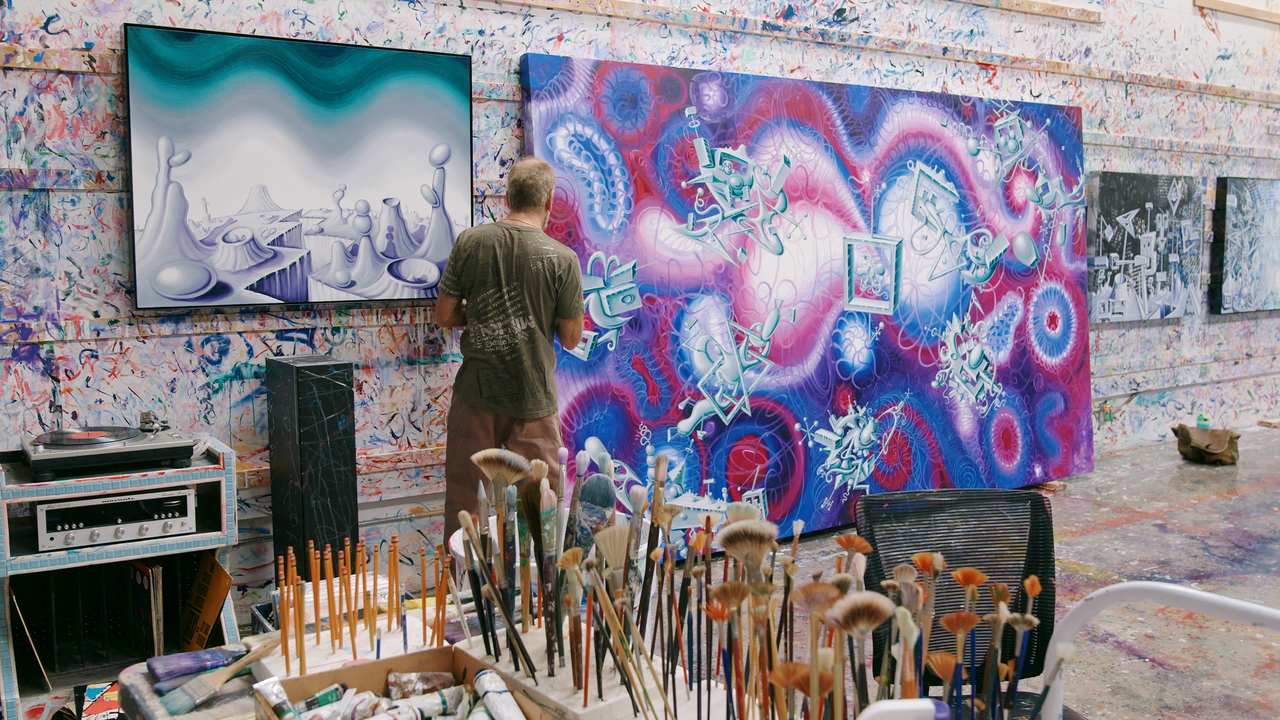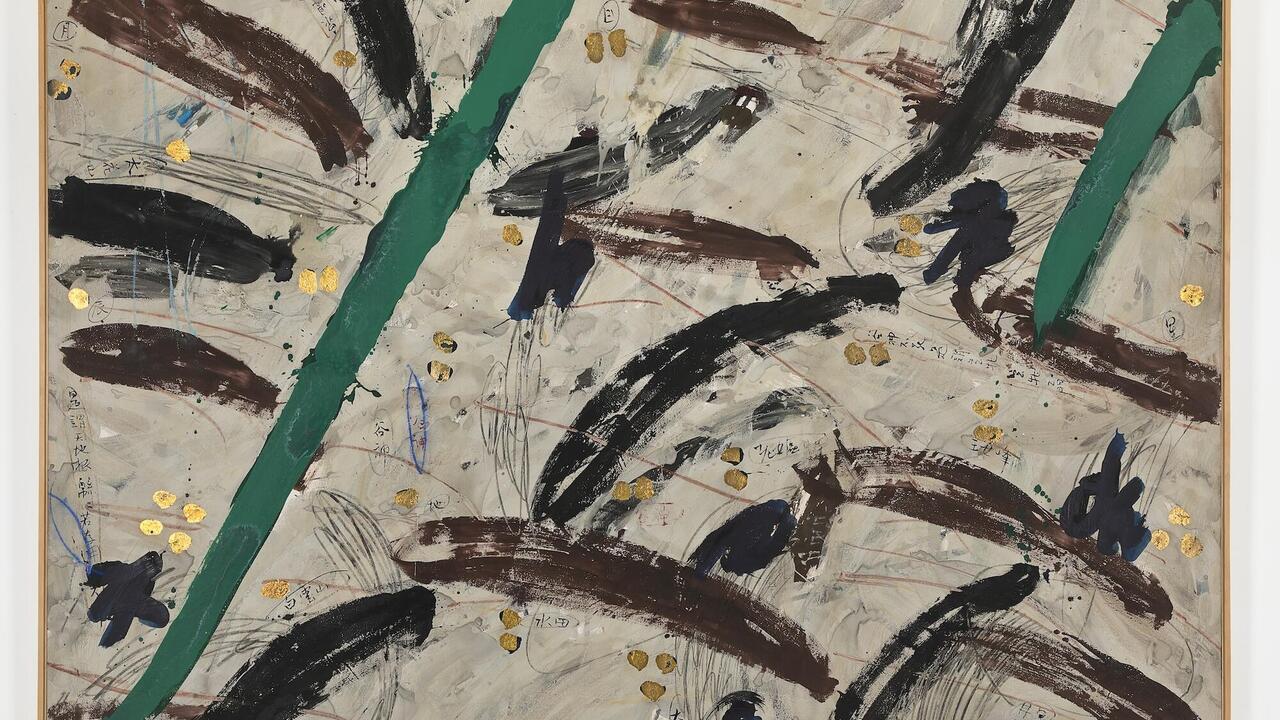East Africa Art Biennale

Art in East Africa goes back a long way - some say, with reference to the artefacts found in Tanzania's Olduvai Gorge, as far as a million and a half years. Wander into the National Museum in Dar es Salaam on an average day, and you'll find fossils, impossibly ancient archaeological pieces and a curious replica of what may well be some of the oldest hominid footsteps in the world. Ceremonial head-dresses, gourds, xylophones and tobacco pipes fill the hall across the courtyard. A room upstairs has more recent artefacts and documents: about the slave trade in Zanzibar and the colonization of the country, first by Germany and then by Britain. All around the walls are vivid black and white photographs of Julius Nyerere, Tanzania's first president after independence in 1961.
On the opening night of the first East Africa Art Biennale (EASTAFAB 2003) a barbecue sizzled outside in the garden, and the slightly cobwebbed atmosphere of the museum was transformed into a new forum for contemporary art in the region. The array of works on show, both in the museum (which had the largest selection) and in four other venues across the city, reflected a scene that has become increasingly visible since Yves Goscinny, the presenter of the Biennale, organized the first 'Art in Tanzania' show in 1998. For that exhibition 44 artists, most of them Tanzanian, contributed just one work each. Five years on, this Biennale hosted 107 artists from Kenya, Tanzania and Uganda, as well as a
scattering of foreign artists living in those countries, each showing at least two works. If anything, there was too much to take in.
In striking contrast to many such events in the so-called West, there was no over-arching curatorial theme, and the vast majority of the works were paintings and sculptures. George Lilanga, perhaps Tanzania's most internationally renowned artist, works in both media and sometimes a mixture of both. He showed eight of his painted sculptures - dazzling, brightly coloured little demons, often known as shetanis (the Swahili word for the 'Satans' of the Makonde cosmology, but the English term misreads their devilish playfulness). In blue, red, orange and pink they bite into lurid fruits with two thick front teeth, squeeze their breasts, which droop down to their knees, stuff handless arms into their ears, take photographs, bend their elastic necks and swivel their heads. They're comic, cheeky and wonderfully grotesque.
Another well-known Tanzanian artist, Hamedi Athumani, also presented works that tell of the shetanis. One particularly hydra-headed wooden sculpture, Kiu (Thirst, 2001), depicts a mother suckling her child above what looks like crocodile skin, while amusing, disturbing, amorphous figures - precisely delineated, but apparently shapeless because the shapes defy the imagination - rise around them. In an interview in the exhibition catalogue Hamedi explains that 'each of my sculptures is about a dream, each tells a story ... about my tribe, the Wazigua.' However you read them, they are both immediately involving and intricately multi-dimensional, revealing new qualities from every angle.
Over in the Russian Tanzanian Cultural Centre, Doreen Mandawa's solo exhibition 'Depth of Black' - an installation of black paintings with sackcloth, designed to be viewed in near-total darkness - was similarly complex. I made the mistake of going there alone. Visitors were given a candle before entering a small rectangular room. With the flickering of the light you could make out shades of black and near turquoise, woven with strips and squares of cloth, which changed constantly in the gloom, playing tricks on perception and perspective. It became hugely tempting to turn on the lights, but I couldn't find the switch and stumbled out into the blinding afternoon sunlight feeling somewhat unilluminated.
The Finnish-Kenyan artist Hanna Maria Rantala's two pieces in the National Museum, on the other hand, were almost too literal but were unusual in the context of the show in directly tackling political issues. Paracite (2003), a light made from empty water bottles, greeted people at the entrance, while Aid (2003) - a wigwam fashioned from the secondhand clothes given by charities to African countries - stood behind it. Meanwhile Joseph Opiyo, an ex-boxer from Kenya, expanded on a necessary tradition of using scrap materials with his three metal bird sculptures, their bodies awkwardly and beautifully made from empty glass and plastic bottles encased in twirls of welded wire.
The Biennale apparently made use of as many available spaces in the city as possible to show the works of all the artists: the Alliance Française, for instance, was busy with its own exhibition of paintings by David Mzuguno, one of the more talented inheritors of the very popular Tanzanian style of painting begun by Eduardo Tingatinga, who died in 1972. But there wasn't enough room for everything. At one venue paintings lined the walls of a market and were hard to find; even in the museum they were too close together and had to jostle for attention. From here the Biennale moves to Kampala and then Nairobi, where one hopes it will have more room to breathe. That's a very small gripe to have, though, for an event still in its infancy, sometimes uneven, more often fascinating.
















